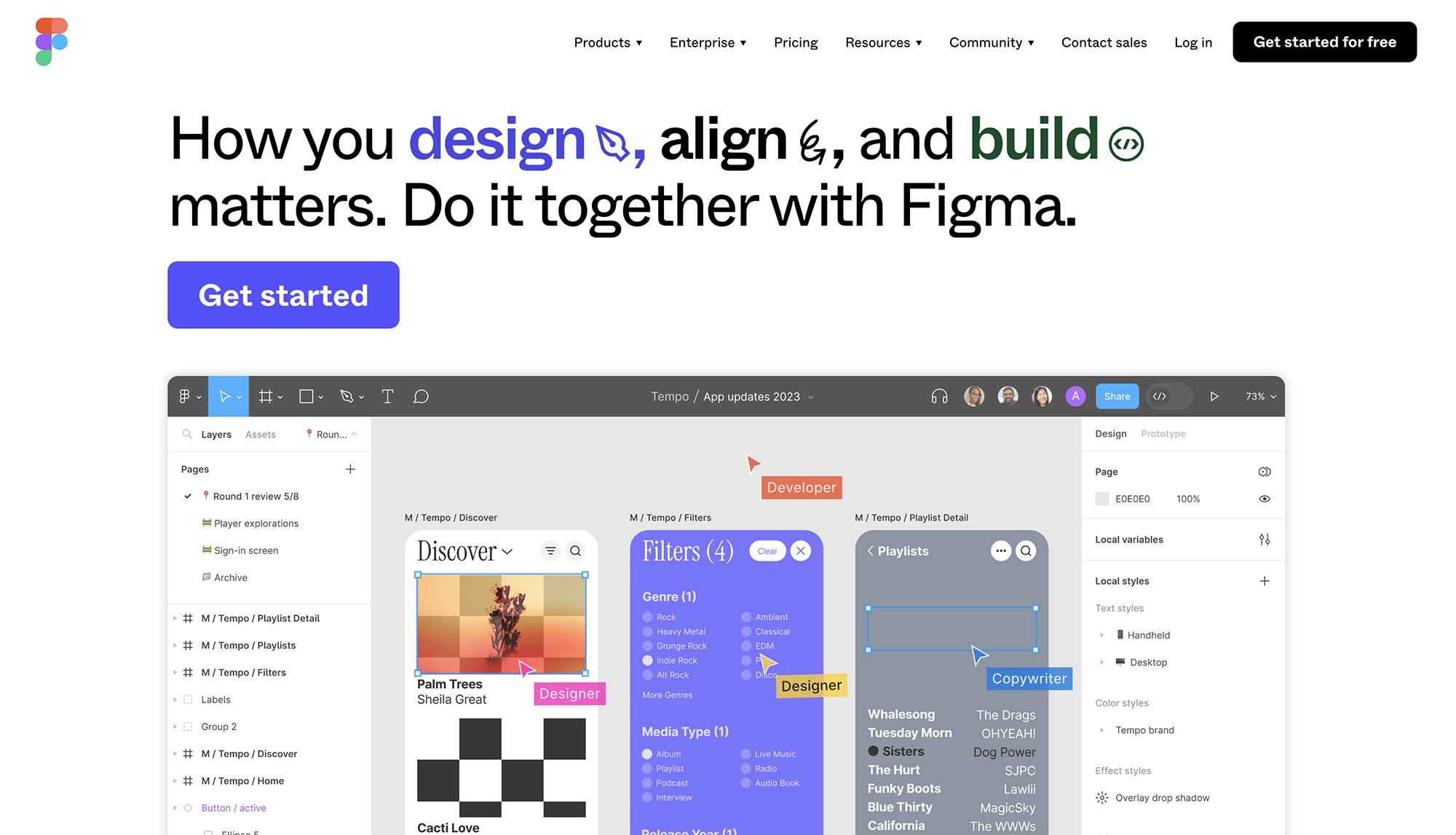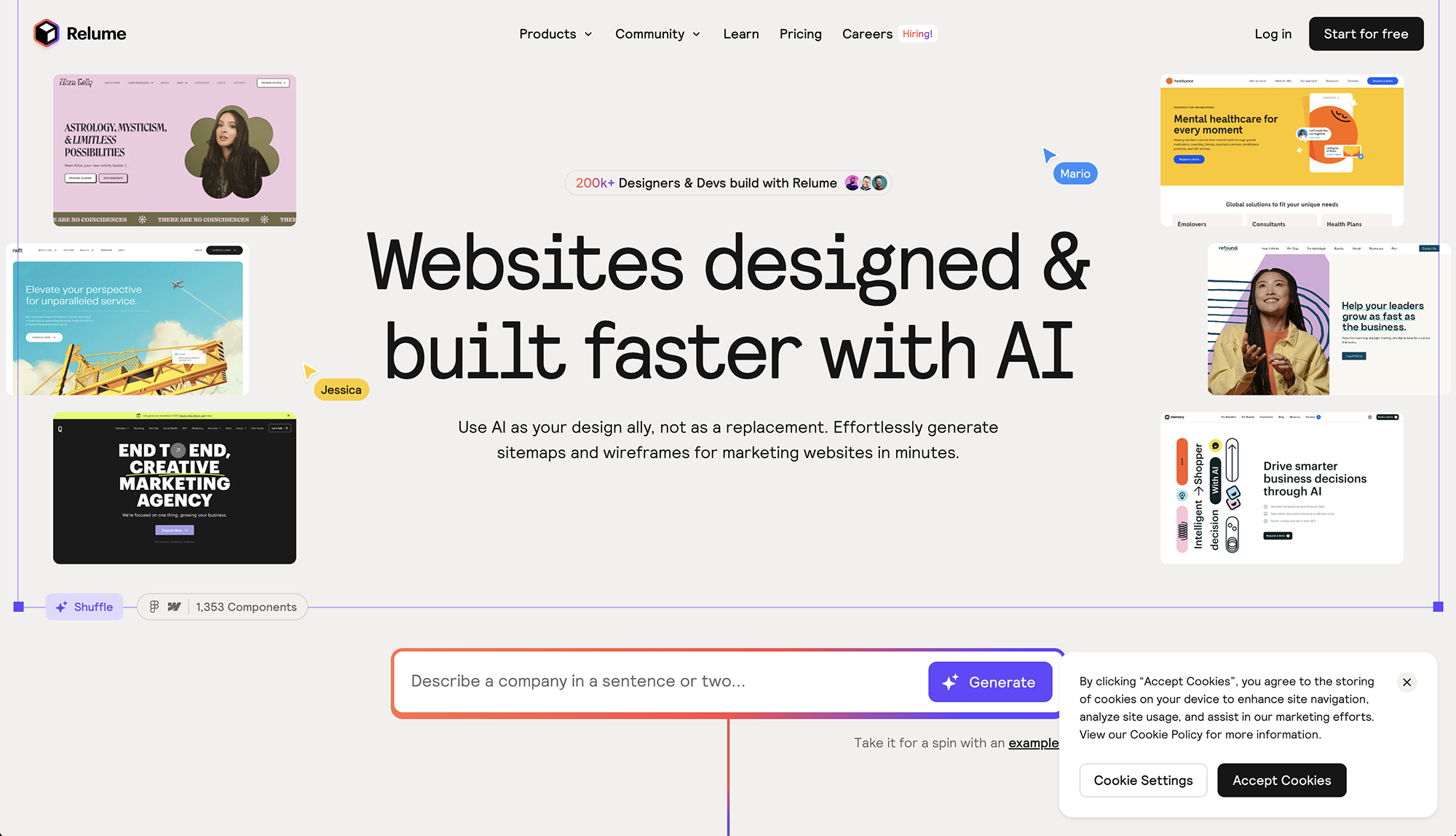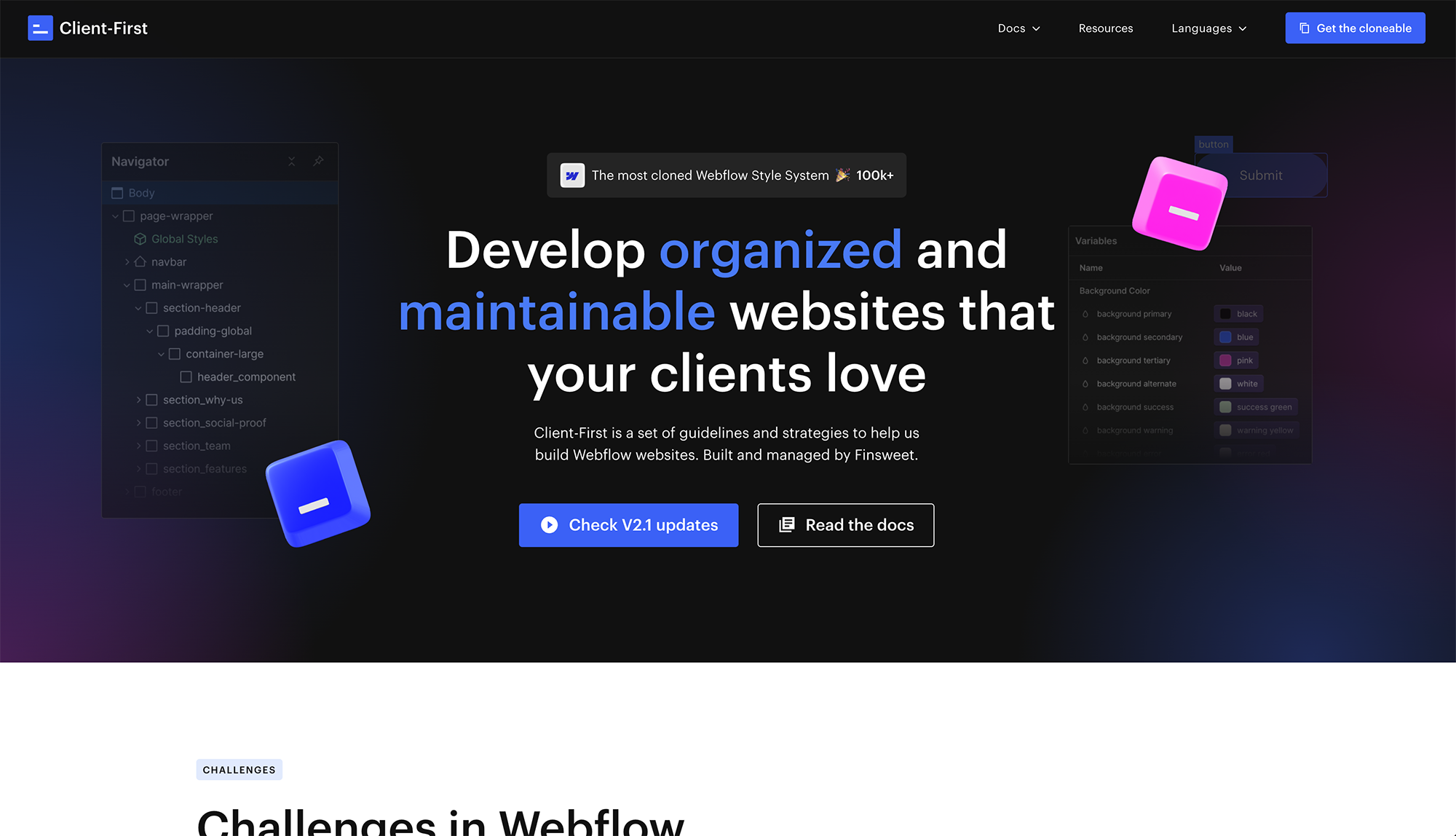Best Practices for Transitioning from Design to Development Seamlessly with Modern Web Tools

In the world of digital product and website development, bridging the gap between design and development phases is a well-documented challenge. Miscommunication, a lack of shared understanding, and inefficiencies in translating designs into functional products are common issues that can have a huge impact on not only the process, but the end result as well. These problems can lead to delays, increased costs, and products that fall short of client expectations. This is where we’ve found modern web tools like Figma, Webflow, Relume, and Finsweet's Client-first help us to significantly streamline processes, ensuring a smooth and seamless web development process.
Understanding the Challenges
The main issue in transitioning designs is the lack of clear communication and alignment between designers and developers. Without a shared expertise or understanding of the end-to-end process, important details can be missed, resulting in a website or product that doesn't hit the mark.
Another big challenge is the technical divide between design tools and development environments. Designs are usually made with design tools and then have to be manually converted into code. This process can easily lead to mistakes and misunderstandings, slowing down the development phase with too much time spent on feedback and revisions.
Without a clear strategy for design elements, maintaining consistency across a project becomes difficult and effects the ability to scale or grow once the project is finally complete.
Leveraging Modern Web Tools for Solutions
Addressing these challenges becomes easier with the integration of today's advanced, team-friendly tools which is what we utilise to make not only our lives easier, but more importantly our clients as well.

Figma for Collaborative Design
Figma has become so important for collaboration between designers and developers. Its real-time collaboration features facilitate a shared understanding of project goals and design concepts, significantly reducing the likelihood of miscommunication. By allowing both designers and developers to work on the same platform, Figma ensures that all stakeholders have a clear view of the design intent and project progress.

Webflow for Streamlined Development
Webflow addresses the technical gap with its intuitive no-code platform, enabling designers to build functional prototypes that closely resemble the final product. This direct translation from design to code minimises errors and accelerates the development timeline, ensuring fidelity to the original design vision.

Relume Library for Consistency
The Relume Library, designed for use with Webflow, offers a collection of customisable components that adhere to best design and development practices. By leveraging these pre-built components, teams can maintain design consistency across projects while minimising the need for custom coding, thereby speeding up the development process and ensuring a high-quality user experience.

Finsweet’s Client-first Approach for Efficiency
Finsweet's Client-first approach introduces a structured, scalable methodology for building in Webflow, ensuring clean, semantic code that's easy for developers to work with. This approach facilitates a smoother transition from design to development by standardising naming conventions and file organisation, addressing the common disconnect between design nuances and technical execution.
Implementing a Seamless Transition
Adopting these modern web tools requires a shift in how teams approach the design-development handoff. It starts with building a culture of collaboration and open communication, using platforms like Figma to facilitate real-time feedback and iteration. Developers involved early in the design process using Webflow can provide insights into feasibility and technical constraints, further aligning project goals.
Utilising the Relume Library within Webflow environments ensures that design systems are not only consistent but also easily implementable, reducing the need for back-and-forth between designers and developers. Meanwhile, adopting Finsweet's Client-first approach ensures that the technical implementation is as streamlined as the design process, with clear guidelines and structures in place for building scalable and maintainable products.
Efficiency by leveraging technology
The transition from design to development in digital product and website design doesn't have to be loaded with challenges. By understanding the issues that exist and leveraging technology you can achieve a seamless, efficient process that doesn’t drag out for months. This strategic integration not only allows better communication and project alignment but also ensures that the final product is a true reflection of the intended design, delivered efficiently and effectively. As the landscape of digital product development continues to evolve, embracing these tools and approaches will be key to staying competitive and delivering innovative, user-focussed websites and digital products.

.jpg)

.jpg)